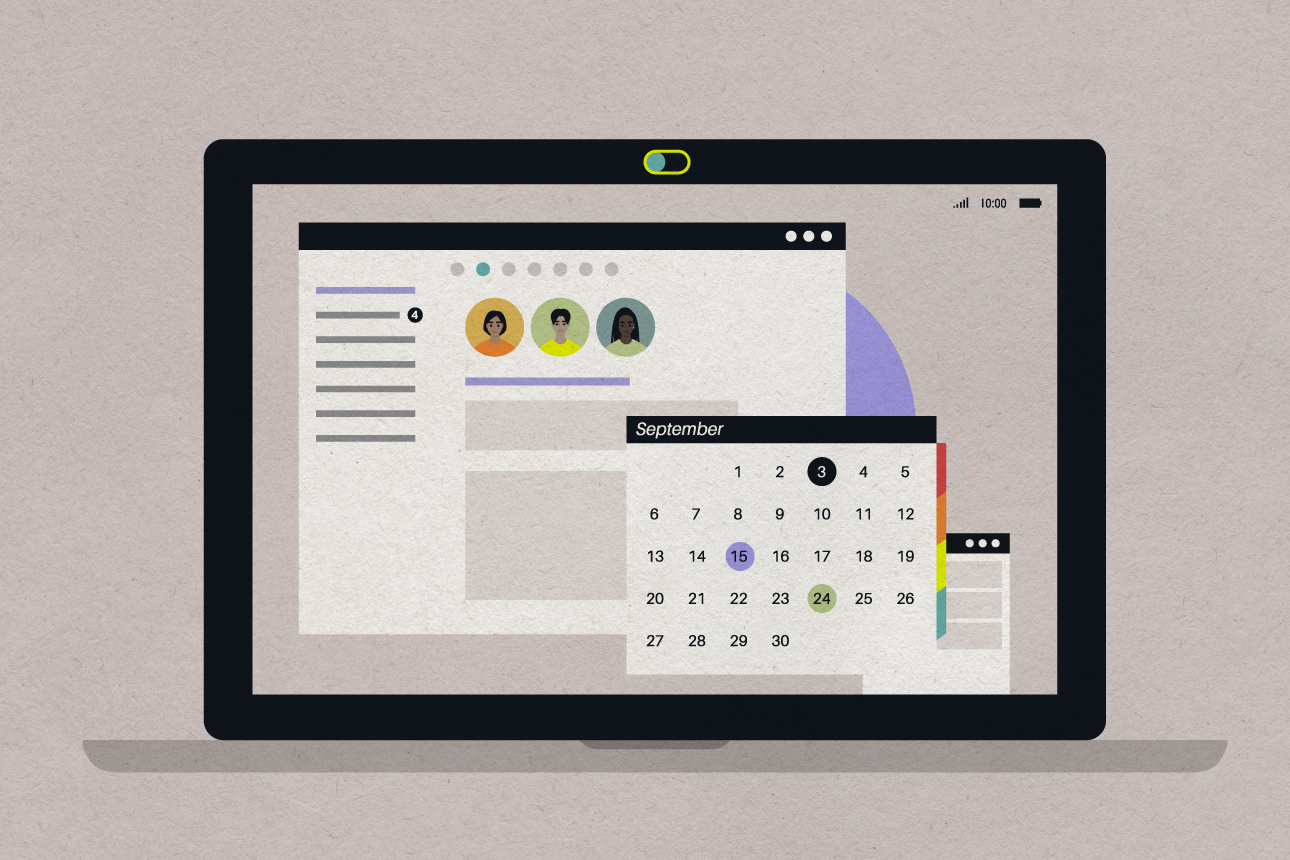Declare ‘Calendar Bankruptcy’ to Move Beyond Meeting-Driven Culture
How the Future Works, a new book from executives at Slack’s Future Forum, offers practical, concrete steps to building a flexible work culture that supports every employee.

It’s a ubiquitous complaint in corporate culture: Practically everyone is overwhelmed by meetings. And there are real questions about whether meetings are necessary to get things done, or if they are getting in our way far too often. In a survey of managers across a wide range of industries, researchers Leslie Perlow, Constance Hadley, and Eunice Eun found that more than 70% of people believed meetings were unproductive and inefficient, and 65% said meetings keep them from completing their work.1
It’s time to rethink the meeting. At Slack, our executives led by example on this by declaring “calendar bankruptcy.” They removed all recurring meetings and one-on-ones from their calendars so that they could consider each one and add back only what was truly necessary. In a message sent out to the entire company, the purpose was explained this way:
- “We’re in a new distributed world and gotta change the way we work.”
- “There are lots of legacy meetings that have changed owner, purpose, scope — let’s start with a blank slate to determine what’s really important.”
This doesn’t mean there are no more meetings. It just means that leaders got a lot more intentional about the time they were taking up on people’s calendars. We found that so many meetings could be eliminated or broken up into parts. For example, your monthly sales meeting might start with a status update. Why not send that out beforehand? Presentations can be shared as decks or asynchronous videos so people can review them in their own time. Tactics like these can lessen your meeting time considerably, and then time together can be more meaningfully spent on meaty discussions or team building. For this to happen, however, leaders have to be more intentional about meetings and employ some forethought and planning. As Priya Parker wrote in The Art of the Gathering, “Ninety percent of what makes a gathering successful is put in place beforehand.”
Dropbox uses what it calls its “3D” model for planning meetings: debate, discuss, decide. We would add a fourth D, for “develop” — time spent focused on honing individual skills or other professional development opportunities. If a meeting doesn’t achieve at least one of those four objectives, then it doesn’t need to be a meeting. Other tools can be used to disseminate information or get a status check, freeing up much more time in your schedule, and the schedules of your team members, to do the kind of work that really moves things forward.
Guardrails can also be put in place to counter the assumption that people need to be available eight hours a day, five days a week for meetings. Tactics that we’ve seen work include Levi Strauss & Co.’s “No Meetings Fridays,” which aims to reduce the internal meeting load and provide a day dedicated to focus time. Google adopted “No Meeting Weeks” years ago for some teams, and Salesforce has similarly adopted “Async Weeks” as a way to not only give people a respite but also get meeting owners to think about whether each meeting is needed or could be cut in terms of frequency, attendance, or both. Slack’s Product, Design, and Engineering team has “Maker Weeks” and “Maker Hours”— two-hour blocks, three days a week, where people can turn off notifications and do focused work.
Challenge Your Own Thinking
Practically all of us have “grown up” professionally in a 9-to-5 culture, and inherent in that culture are ways of thinking that we may never have examined very closely. Sheela remembers, early in her career, working until the wee hours of the morning and being lauded for her “selfless” and “relentless” behavior as a result. Some of the most memorable advice she got in business school was to “burn the candle at both ends until you’re in your 40s and then reacquaint yourself with your friends and family.”
“No pain, no gain” had always been Helen’s family motto until she ended up burning out while still in her 20s from a job that entailed 100-hour workweeks, frequent travel, and a long commute. During a discussion about work-life balance with a partner in her firm, the woman casually mentioned that her personal goal was to see her kids twice a week — not day, but week.
Brian was taught early on that an attitude of “seldom wrong, never in doubt” was key to success, meaning few around him willingly admitted when there were gaps in their knowledge or they didn’t have all the answers. This approach proved to be a real liability at his first startup, where there was a whole lot he didn’t know — that, in fact, no one knew. He had to get past that ingrained way of thinking fast in order to enlist the help of others in finding solutions to complex issues — otherwise, the venture could have failed.
We’re hardly anomalies in the corporate world. So many of us have internalized lessons over the years that we’ve had to unlearn for the sake of our own success as well as that of the businesses we work for. It’s time to challenge some of our old notions about what makes someone good at what they do — like that working more equals working better, or that employees can’t be trusted to get stuff done on their own. These are default ways of thinking in most corporate cultures, but what makes us so sure they’re right? After all, have we ever really tested them?
In fact, there’s lots of evidence to suggest that they aren’t right — evidence showing that stress and burnout make us worse at what we do, not better, and that a lack of trust demotivates employees rather than motivating them. If we really want to unlock the potential in people, we need to keep our eyes trained on what really delivers results and stop rewarding behaviors that undermine them. Think about that the next time you praise someone for answering emails late at night or being in the office first thing in the morning before anyone else. Because it’s the quality of work and the results it drives that matter most, not when or where you do it.
References (1)
1. L.A. Perlow, C.N. Hadley, and E. Eun, “Stop the Meeting Madness,” Harvard Business Review 95, no. 4 (July-August 2017): 62-69.








